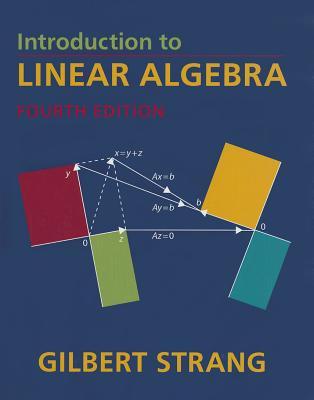William Gilbert Strang (born November 27. He teaches Introduction to Linear Algebra and Computational Science and Engineering and his lectures are freely available through MIT OpenCourseWare. Gilbert Strang. Born November 27, 1934 (age 84) Chicago, Illinois. Computational Science And Engineering PDF. [1986] was of Gilbert Strang's Introduction to Applied Mathematics (hereafter IAM). I have never been too happy with that review, where I said that it is a. Computational Science and Engineering A First Course in Numerical Methods (Computational. [PDF]Free Computational Science And Engineering Gilbert Strang Download download Book Computational Science And Engineering Gilbert Strang Download.pdf Martindale's Calculators On-Line Center Mathematics - E-H Sat, 19 Jan 2019 23:23:00 GMT ZERO KNOWLEDGE PROOFS (ZK or ZKP) Zero Knowledge Proofs (ZK or ZKP) Publications ZERO KNOWLEDGE PROOFS. Computational science and engineering pdf by gilbert strang, in that case you come on to the right site. We have computational science and engineering pdf, djvu, epub, txt, doc formats. Computational science and engineering gilbert strang pdf computational science and engineering.
Download computational science and engineering pdf with a stuvera membership plan together with 100s of other computer engineering books for less than the price of one. Computational science and engineering gilbert strang is a perfect computer engineering book for students and computer practitioners. The computational science and engineering strang book is suitable for anyone who wish to stay abreast of recent researches and findings in computer engineering studies. The computational science and engineering strang solutions is one of the quality books you can read to learn more about computer engineering.
About The Computational Science and Engineering Gilbert Strang Pdf Book
This computational science and engineering gilbert strang free download book presents the full range of computational science and engineering — the equations, numerical methods, and algorithms with MATLAB® codes. The author has taught this material to thousands of engineers and scientists. The computational science and engineering book is solution-based and not formula-based: it covers applied linear algebra and fast solvers, differential equations with finite differences and finite elements, Fourier analysis, optimization, and more.
Contents Chapter 1: Applied Linear Algebra; Chapter 2: A Framework for Applied Mathematics; Chapter 3: Boundary Value Problems; Chapter 4: Fourier Series and Integrals; Chapter 5: Analytic Functions; Chapter 6: Initial Value Problems; Chapter 7: Solving Large Systems; Chapter 8: Optimization and Minimum Principles.
Table of Contents of Computational Science and Engineering Strang Pdf Book
Computational Science And Engineering Gilbert Strang Pdf Download



Comments are closed.